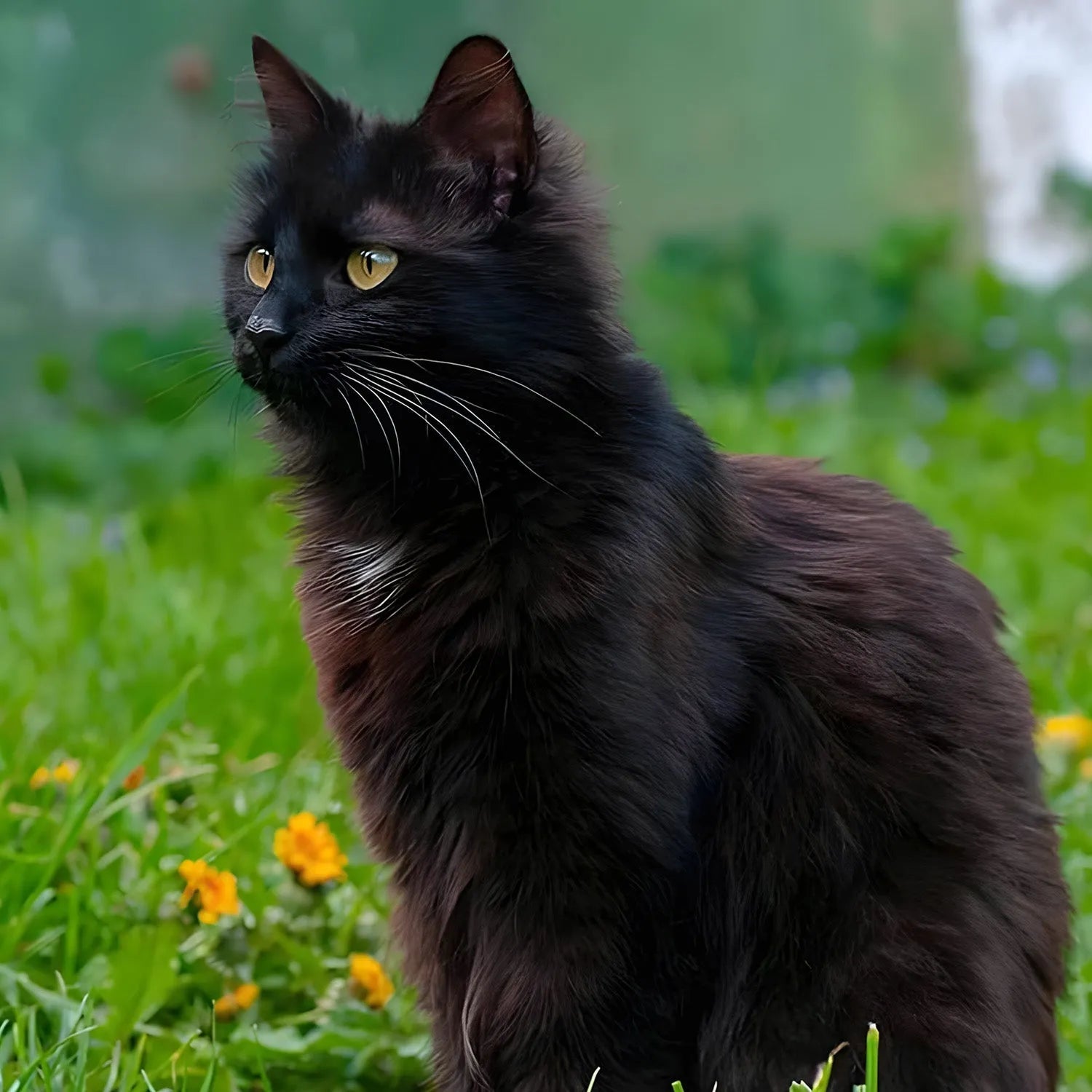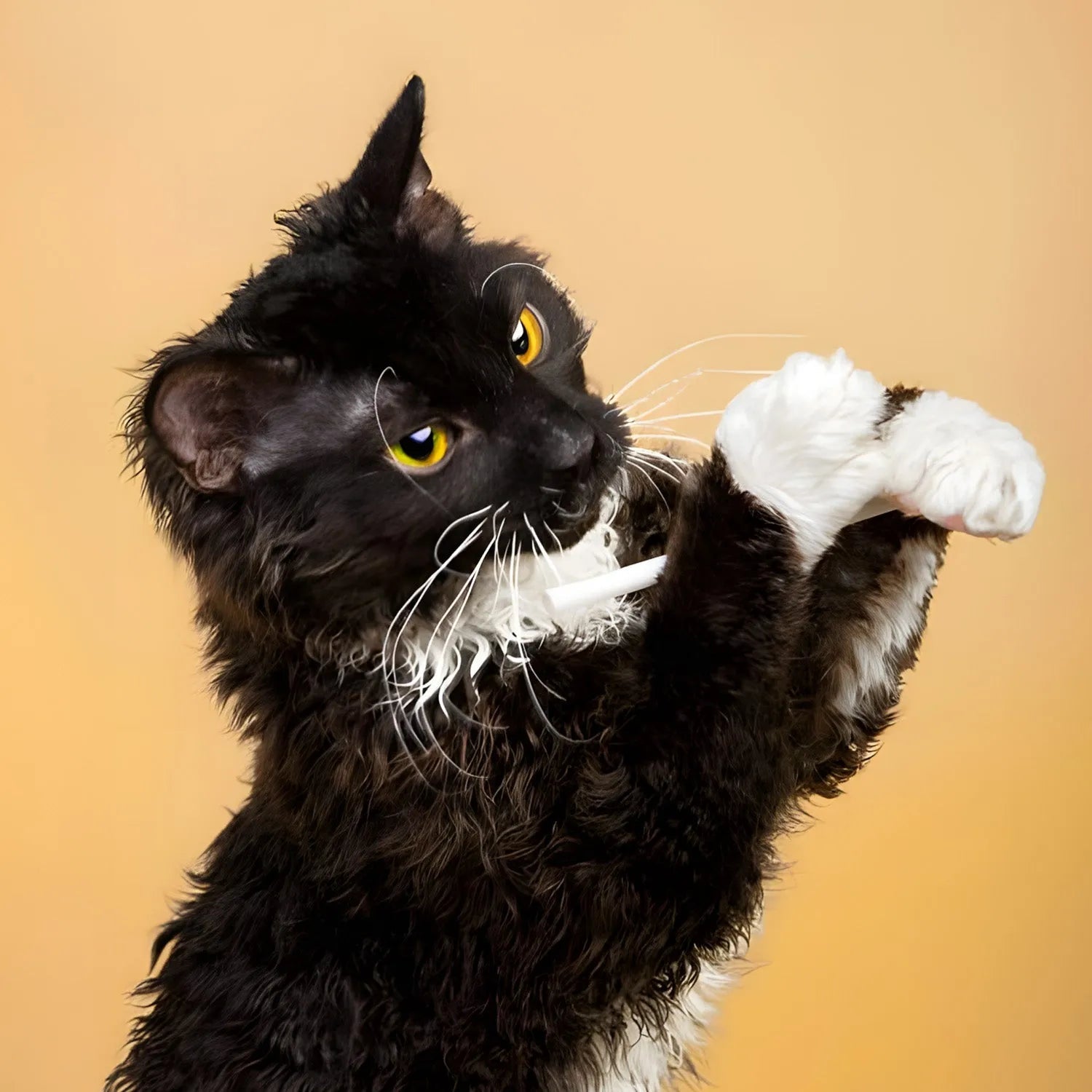Russian Blue: The Elegant and Independent Feline
Introduction
The Russian Blue is a striking and elegant breed, known for its beautiful silver-blue coat, bright green eyes, and graceful demeanor. Despite their somewhat reserved appearance, Russian Blues are affectionate and loyal companions who form deep bonds with their owners. Their quiet, independent nature makes them ideal pets for individuals or families looking for a cat that enjoys companionship but also appreciates its own space. In this blog, we’ll explore the Russian Blue’s lifestyle, behavior, grooming needs, and how it interacts with humans and other pets.
Ratings (1-5)
-
Environmental Adaptability: 5
-
Food Consumption: 3
-
Need for Companionship: 3
-
Trainability: 4
-
Tolerance of Children: 4
-
Ease of Domestication: 5
History and Origins
The Russian Blue has a long and mysterious history, with its exact origins somewhat unclear. It is believed that these cats originated in the Archangel Isles in northern Russia, where their dense, plush coats would have been an asset in the cold climate. They were brought to Europe in the 1800s, where they quickly gained popularity for their beautiful coats and dignified personalities. The breed was officially recognized in the late 19th century and has since become a favorite among cat enthusiasts around the world.
Russian Blues were initially known as Archangel Blues due to their supposed origins, but their name was later changed to reflect their sleek, silver-blue coats. Over the years, they have been selectively bred to maintain their stunning appearance and gentle nature.
Physical Characteristics and Colors
Russian Blues are medium-sized cats with a slender, graceful build. They have long legs, a well-proportioned body, and a muscular frame, making them agile and athletic. The breed’s most distinctive feature is its short, dense coat, which is a striking silver-blue color. The fur has a plush, velvety texture, and the blue-gray color is the result of each hair being tipped with silver.
In addition to their unique coat, Russian Blues are known for their bright green eyes, which stand out beautifully against their silvery fur. Their almond-shaped eyes and large, pointed ears give them an alert and inquisitive expression.
Lifestyle and Behavior
Russian Blues are known for their calm, quiet, and somewhat reserved personalities. While they form strong bonds with their owners, they are not overly demanding of attention and are content to spend time on their own. These cats are independent by nature and enjoy observing their surroundings from a distance, but they also appreciate affection and will happily curl up in your lap when they are in the mood for cuddles.
Despite their independent streak, Russian Blues are loyal and loving cats that enjoy being around their human family members. They are known for being sensitive to their owner’s emotions and will often try to comfort their humans when they sense something is wrong. Russian Blues are also known for their gentle and polite nature, making them excellent companions for households that prefer a quieter, more low-maintenance pet.
Trainability and Intelligence
Russian Blues are intelligent cats that can be trained to follow commands, perform tricks, and even walk on a leash. They respond well to positive reinforcement techniques, such as treats and praise, and enjoy interactive toys that challenge their minds. Russian Blues are naturally curious and enjoy exploring their environment, making training an excellent way to keep them mentally stimulated.
Although they are not as high-energy as some other breeds, Russian Blues appreciate regular play sessions that engage both their bodies and their minds. Training sessions with Russian Blues should be relaxed and fun, as they are quick learners but can become bored with repetitive tasks. Their intelligence, combined with their independent nature, makes them easy to train and a joy to interact with.
Social Behavior and Human Interaction
Russian Blues are affectionate cats that form deep bonds with their human family members, but they are not as needy as some other breeds. They enjoy spending time with their owners but are also content to have their own space. Russian Blues are often described as "polite" cats because they do not demand constant attention but will happily receive affection when offered.
These cats are known for being particularly sensitive to their environment and may take time to warm up to new people or changes in their routine. However, once they feel comfortable, Russian Blues are affectionate and loyal companions that enjoy being near their family members. They are generally quiet cats and are not known for being overly vocal, although they will communicate with soft purrs and meows when they want attention.
Compatibility with Children and Other Pets
Russian Blues are generally good with children, provided they are treated with respect. Their calm and gentle nature makes them a good choice for households with older children who understand how to interact with cats. While Russian Blues may be more reserved around young children, they can form strong bonds with kids who are gentle and patient with them.
In addition to being good with children, Russian Blues also tend to get along well with other pets, including dogs. However, because of their sensitive nature, it’s important to introduce them to other animals gradually to ensure a smooth transition. Russian Blues are not aggressive and prefer to avoid conflict, so they will usually get along well with other pets once they feel comfortable in their environment.
Grooming and Care
The grooming needs of a Russian Blue are relatively low due to their short, dense coat. Weekly brushing is usually sufficient to remove loose hairs and keep their coat looking healthy and shiny. Their fur has a unique double-layered structure, which makes it soft and plush but also less prone to shedding compared to other breeds.
In addition to regular brushing, Russian Blues require routine dental care, ear cleaning, and nail trimming to maintain their overall health. Because of their independent nature, they may not be as receptive to grooming as some other breeds, so it’s important to start a grooming routine early to help them get used to it.
Health and Lifespan
Russian Blues are generally healthy cats with few breed-specific health issues. However, like all breeds, they can be prone to certain genetic conditions, including bladder stones and urinary tract issues. Regular veterinary check-ups, a balanced diet, and maintaining a healthy weight are essential to keeping your Russian Blue in good health.
With proper care, Russian Blues typically live 15-20 years or more, making them long-term companions for any household. Ensuring that they have a stress-free environment, a high-quality diet, and regular veterinary care will help ensure a long, healthy life.
Environmental Adaptability
Russian Blues are adaptable cats that can thrive in a variety of living environments, whether in a small apartment or a large house. They are particularly well-suited to indoor living, where they can enjoy a calm and predictable environment. Russian Blues are sensitive to changes in their surroundings, so they appreciate stability and routine.
Because of their quiet and independent nature, Russian Blues are ideal for individuals or families who prefer a low-maintenance pet. While they enjoy interactive play and affection, they are also content to spend time on their own, making them suitable for households where the owners may be away for part of the day.
Feeding Requirements
A balanced diet is crucial for maintaining the health and energy levels of Russian Blue cats. High-quality cat food that is rich in protein is recommended to support their muscular build and overall well-being. Fresh water should always be available. Because Russian Blues are prone to weight gain if overfed, it’s important to monitor their food intake and provide them with regular exercise to prevent obesity.
Consult your veterinarian for specific dietary recommendations based on your cat's age, weight, and health needs. Regular play sessions and activities that encourage physical movement can also help keep your Russian Blue healthy and fit.
Conclusion
The Russian Blue is a sleek, elegant breed that combines beauty with intelligence and affection. Their calm and independent nature makes them ideal pets for individuals or families who want a loving companion without the high energy or demanding nature of some other breeds. If you’re looking for a graceful and loyal cat that will form a deep bond with you while maintaining its independence, the Russian Blue might be the perfect fit.
For more information about other cat breeds and pet care tips, stay tuned to our blog!
References:
- Smith, R. (2021). "The Graceful and Loyal Russian Blue Cat." *Journal of Feline Studies*, 35(3), 215-230.
- Davis, M. (2020). "Caring for Your Russian Blue: A Comprehensive Guide." *Cat Lover’s Magazine*, July issue, pp. 25-33.
- Harris, E. (2019). "Health and Wellness in Russian Blue Cats." *Veterinary Journal*, 79(2), 123-137.


